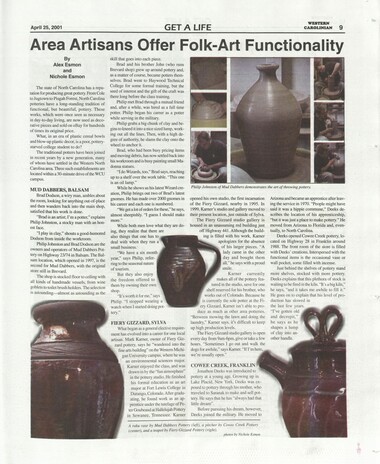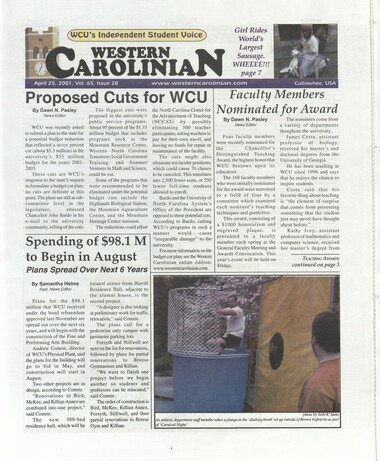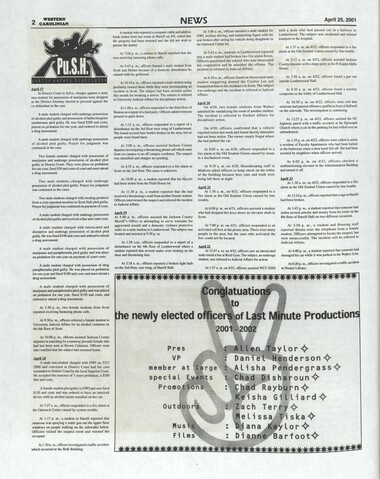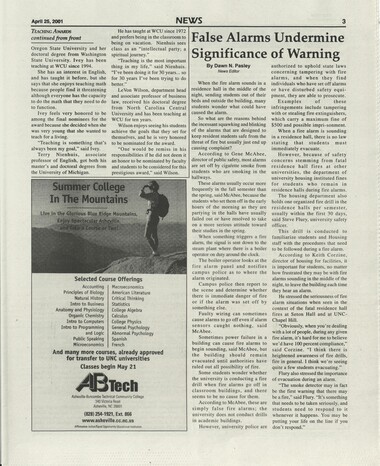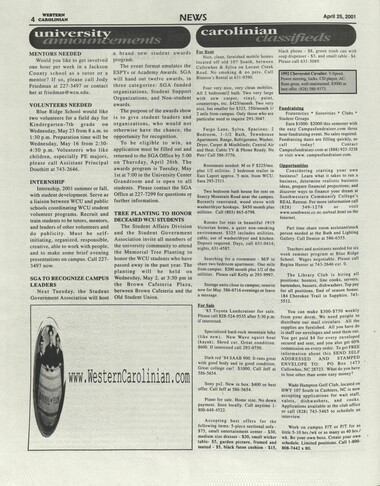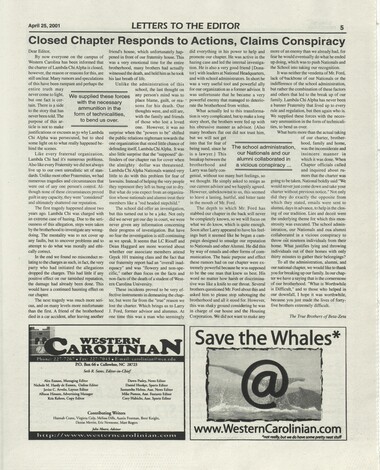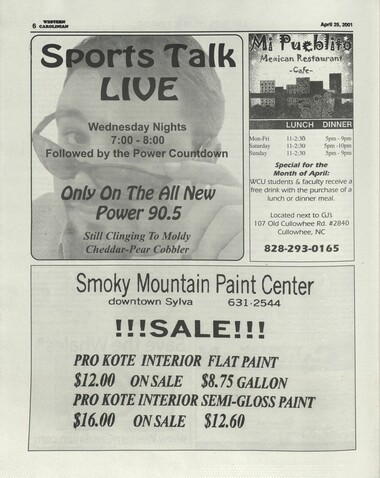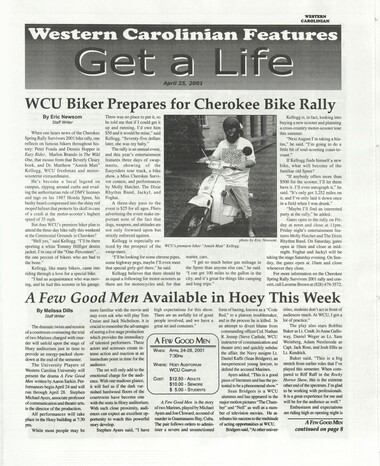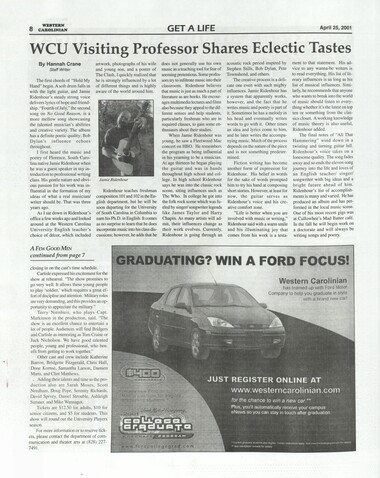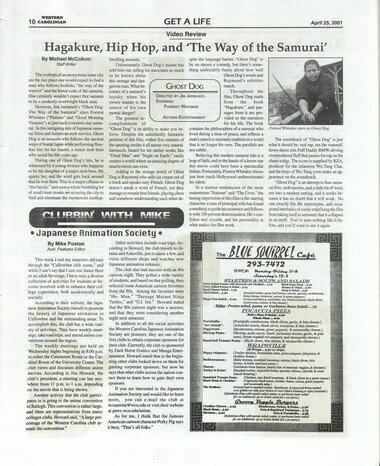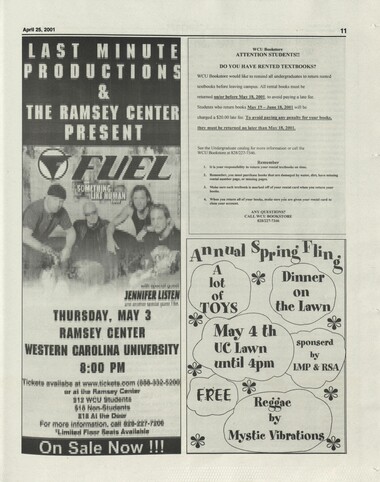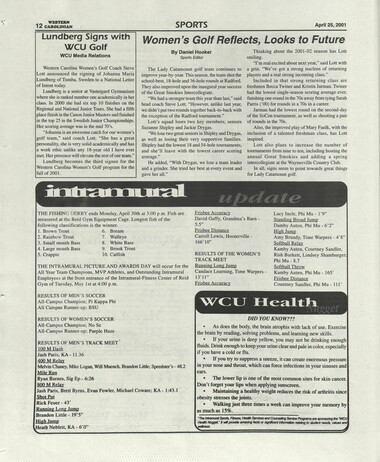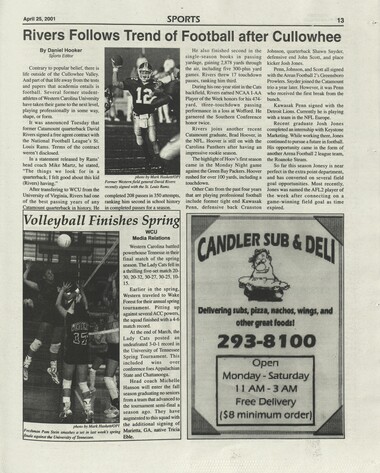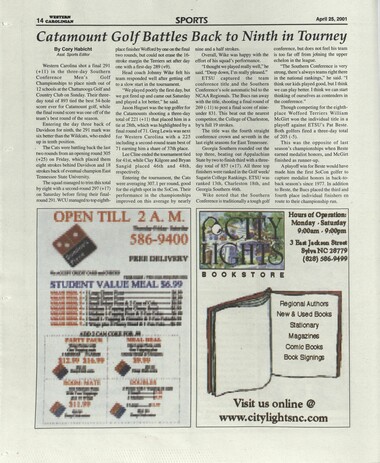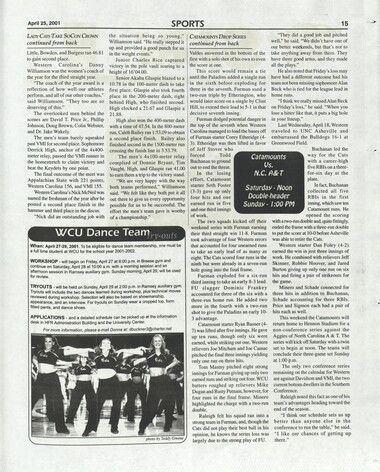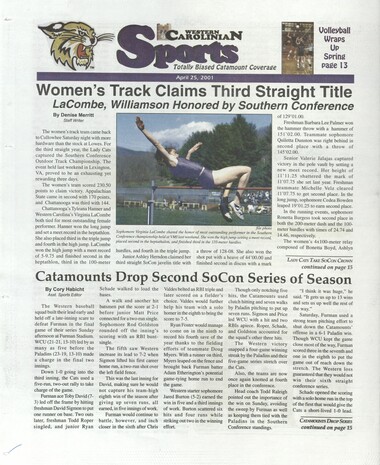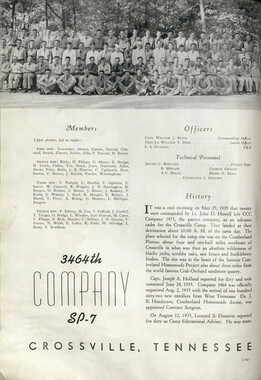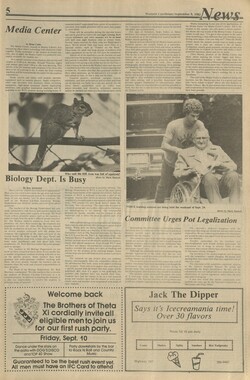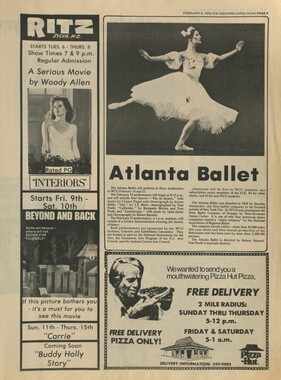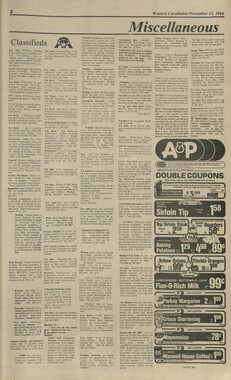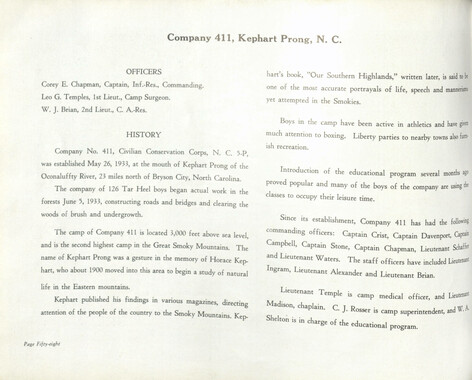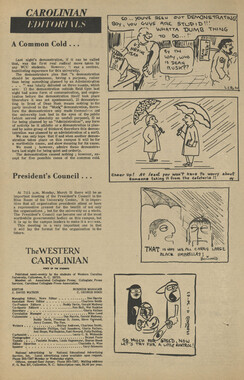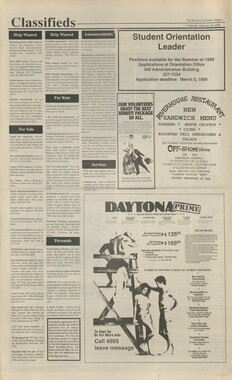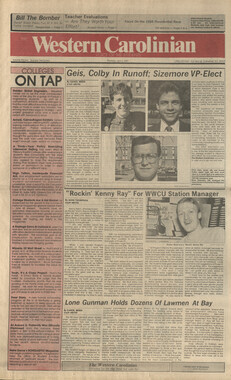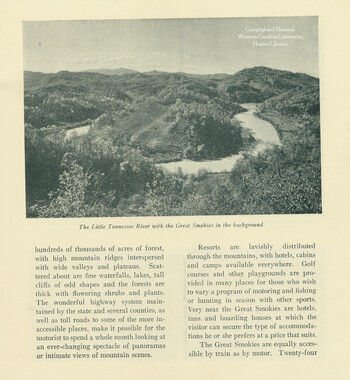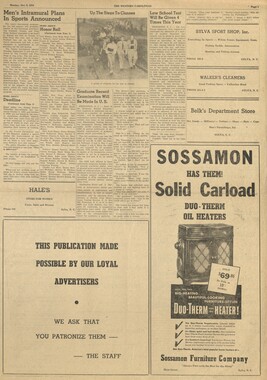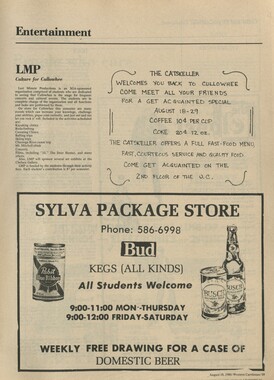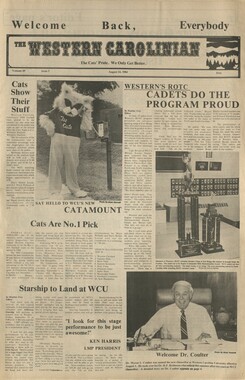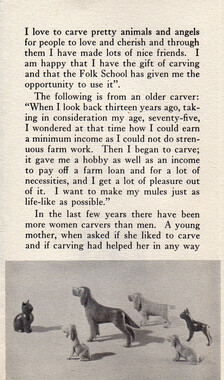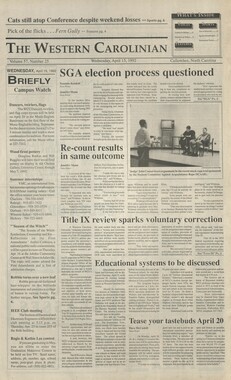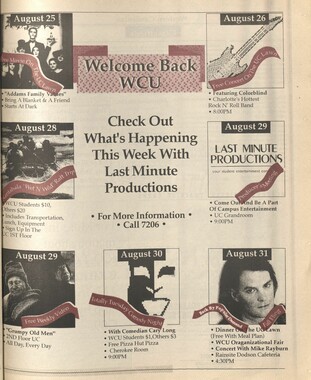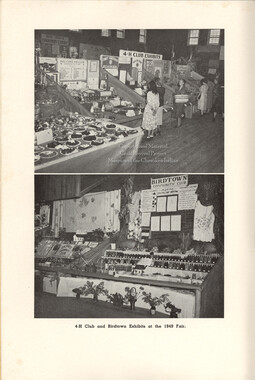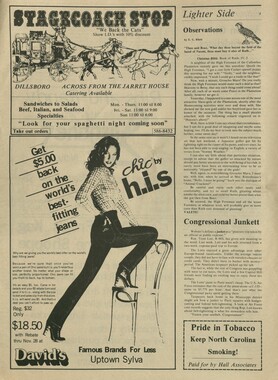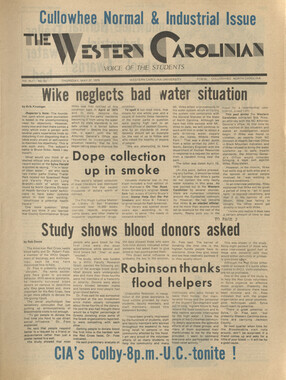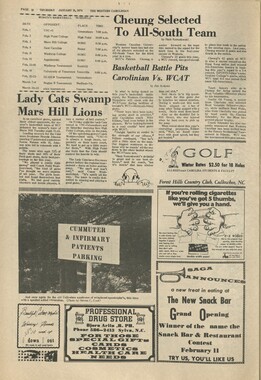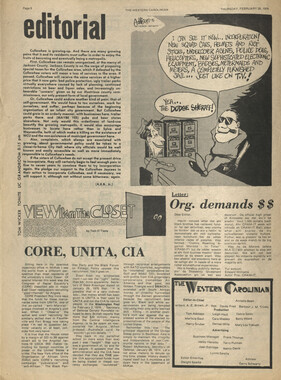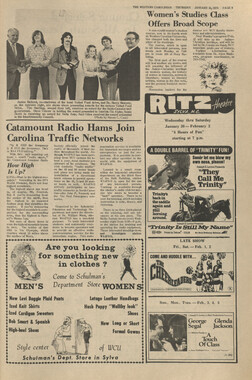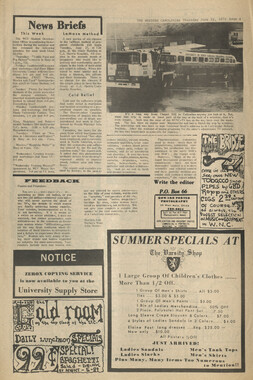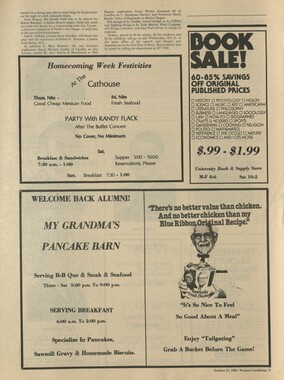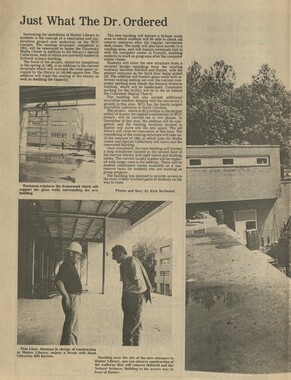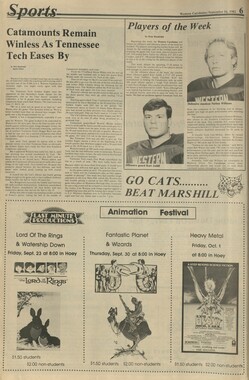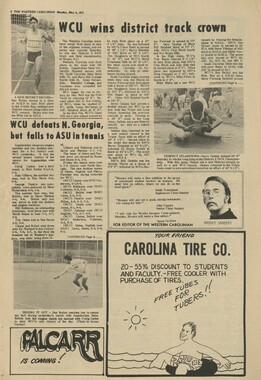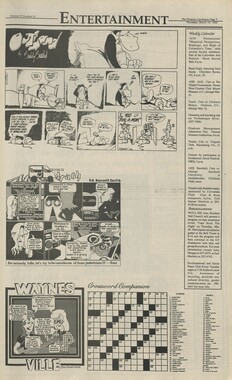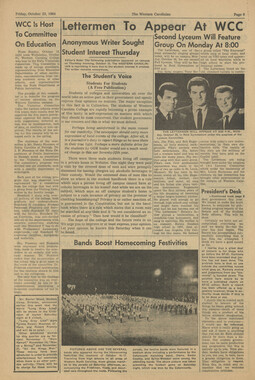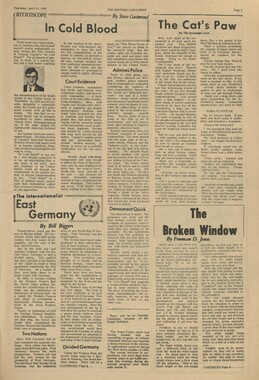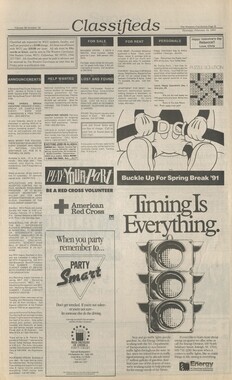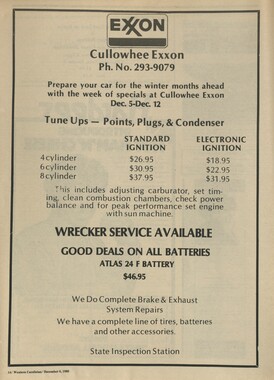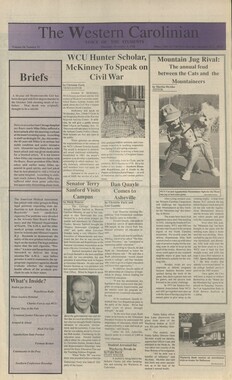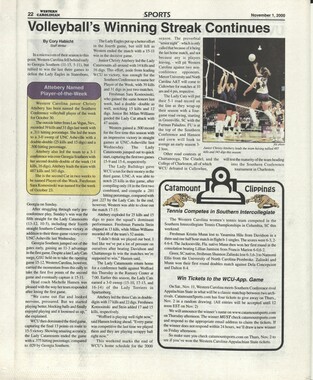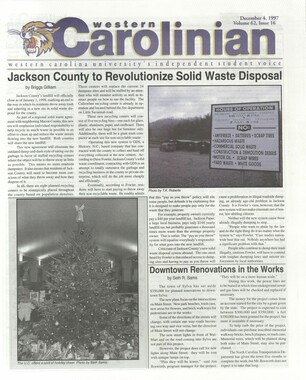Western Carolina University (20)
View all
- Canton Champion Fibre Company (2308)
- Cherokee Traditions (293)
- Civil War in Southern Appalachia (165)
- Craft Revival (1942)
- Great Smoky Mountains - A Park for America (2767)
- Highlights from Western Carolina University (430)
- Horace Kephart (941)
- Journeys Through Jackson (154)
- LGBTQIA+ Archive of Jackson County (24)
- Oral Histories of Western North Carolina (314)
- Picturing Appalachia (6772)
- Stories of Mountain Folk (413)
- Travel Western North Carolina (160)
- Western Carolina University Fine Art Museum Vitreograph Collection (129)
- Western Carolina University Herbarium (92)
- Western Carolina University: Making Memories (708)
- Western Carolina University Publications (2283)
- Western Carolina University Restricted Electronic Theses and Dissertations (146)
- Western North Carolina Regional Maps (71)
- World War II in Southern Appalachia (131)
University of North Carolina Asheville (6)
View all
- Allanstand Cottage Industries (62)
- Appalachian National Park Association (53)
- Bennett, Kelly, 1890-1974 (1388)
- Berry, Walter (76)
- Brasstown Carvers (40)
- Carver, George Washington, 1864?-1943 (26)
- Cathey, Joseph, 1803-1874 (1)
- Champion Fibre Company (233)
- Champion Paper and Fibre Company (297)
- Cherokee Indian Fair Association (16)
- Cherokee Language Program (22)
- Crowe, Amanda (40)
- Edmonston, Thomas Benton, 1842-1907 (7)
- Ensley, A. L. (Abraham Lincoln), 1865-1948 (275)
- Fromer, Irving Rhodes, 1913-1994 (70)
- George Butz (BFS 1907) (46)
- Goodrich, Frances Louisa (120)
- Grant, George Alexander, 1891-1964 (96)
- Heard, Marian Gladys (60)
- Kephart, Calvin, 1883-1969 (15)
- Kephart, Horace, 1862-1931 (313)
- Kephart, Laura, 1862-1954 (39)
- Laney, Gideon Thomas, 1889-1976 (439)
- Masa, George, 1881-1933 (61)
- McElhinney, William Julian, 1896-1953 (44)
- Niggli, Josephina, 1910-1983 (10)
- North Carolina Park Commission (105)
- Osborne, Kezia Stradley (9)
- Owens, Samuel Robert, 1918-1995 (11)
- Penland Weavers and Potters (36)
- Roberts, Vivienne (15)
- Roth, Albert, 1890-1974 (142)
- Schenck, Carl Alwin, 1868-1955 (1)
- Sherrill's Photography Studio (2565)
- Southern Highland Handicraft Guild (127)
- Southern Highlanders, Inc. (71)
- Stalcup, Jesse Bryson (46)
- Stearns, I. K. (213)
- Thompson, James Edward, 1880-1976 (226)
- United States. Indian Arts and Crafts Board (130)
- USFS (683)
- Vance, Zebulon Baird, 1830-1894 (1)
- Weaver, Zebulon, 1872-1948 (58)
- Western Carolina College (230)
- Western Carolina Teachers College (282)
- Western Carolina University (1794)
- Western Carolina University. Mountain Heritage Center (18)
- Whitman, Walt, 1819-1892 (10)
- Wilburn, Hiram Coleman, 1880-1967 (73)
- Williams, Isadora (3)
- Cain, Doreyl Ammons (0)
- Crittenden, Lorraine (0)
- Rhodes, Judy (0)
- Smith, Edward Clark (0)
- Appalachian Region, Southern (2393)
- Asheville (N.C.) (1887)
- Avery County (N.C.) (26)
- Blount County (Tenn.) (161)
- Buncombe County (N.C.) (1664)
- Cherokee County (N.C.) (283)
- Clay County (N.C.) (555)
- Graham County (N.C.) (233)
- Great Smoky Mountains National Park (N.C. and Tenn.) (478)
- Haywood County (N.C.) (3522)
- Henderson County (N.C.) (70)
- Jackson County (N.C.) (4692)
- Knox County (Tenn.) (25)
- Knoxville (Tenn.) (12)
- Lake Santeetlah (N.C.) (10)
- Macon County (N.C.) (420)
- Madison County (N.C.) (211)
- McDowell County (N.C.) (39)
- Mitchell County (N.C.) (132)
- Polk County (N.C.) (35)
- Qualla Boundary (981)
- Rutherford County (N.C.) (76)
- Swain County (N.C.) (2113)
- Transylvania County (N.C.) (247)
- Watauga County (N.C.) (12)
- Waynesville (N.C.) (68)
- Yancey County (N.C.) (72)
- Aerial Photographs (3)
- Aerial Views (60)
- Albums (books) (4)
- Articles (1)
- Artifacts (object Genre) (228)
- Biography (general Genre) (2)
- Cards (information Artifacts) (38)
- Clippings (information Artifacts) (191)
- Crafts (art Genres) (622)
- Depictions (visual Works) (21)
- Design Drawings (1)
- Drawings (visual Works) (184)
- Envelopes (73)
- Facsimiles (reproductions) (1)
- Fiction (general Genre) (4)
- Financial Records (12)
- Fliers (printed Matter) (67)
- Glass Plate Negatives (381)
- Guidebooks (2)
- Internegatives (10)
- Interviews (811)
- Land Surveys (102)
- Letters (correspondence) (1013)
- Manuscripts (documents) (619)
- Maps (documents) (159)
- Memorandums (25)
- Minutes (administrative Records) (59)
- Negatives (photographs) (5835)
- Newsletters (1285)
- Newspapers (2)
- Occupation Currency (1)
- Paintings (visual Works) (1)
- Pen And Ink Drawings (1)
- Periodicals (193)
- Personal Narratives (7)
- Photographs (12975)
- Plans (maps) (1)
- Poetry (6)
- Portraits (1663)
- Postcards (329)
- Programs (documents) (151)
- Publications (documents) (2237)
- Questionnaires (65)
- Scrapbooks (282)
- Sheet Music (1)
- Slides (photographs) (402)
- Sound Recordings (796)
- Specimens (92)
- Speeches (documents) (15)
- Tintypes (photographs) (8)
- Transcripts (322)
- Video Recordings (physical Artifacts) (23)
- Vitreographs (129)
- Text Messages (0)
- A.L. Ensley Collection (275)
- Appalachian Industrial School Records (7)
- Appalachian National Park Association Records (336)
- Axley-Meroney Collection (2)
- Bayard Wootten Photograph Collection (20)
- Bethel Rural Community Organization Collection (7)
- Blumer Collection (5)
- C.W. Slagle Collection (20)
- Canton Area Historical Museum (2110)
- Carlos C. Campbell Collection (282)
- Cataloochee History Project (65)
- Cherokee Studies Collection (4)
- Daisy Dame Photograph Album (5)
- Daniel Boone VI Collection (1)
- Doris Ulmann Photograph Collection (112)
- Elizabeth H. Lasley Collection (1)
- Elizabeth Woolworth Szold Fleharty Collection (4)
- Frank Fry Collection (95)
- George Masa Collection (173)
- Gideon Laney Collection (452)
- Hazel Scarborough Collection (2)
- Hiram C. Wilburn Papers (28)
- Historic Photographs Collection (236)
- Horace Kephart Collection (861)
- Humbard Collection (33)
- Hunter and Weaver Families Collection (1)
- I. D. Blumenthal Collection (4)
- Isadora Williams Collection (4)
- Jesse Bryson Stalcup Collection (47)
- Jim Thompson Collection (224)
- John B. Battle Collection (7)
- John C. Campbell Folk School Records (80)
- John Parris Collection (6)
- Judaculla Rock project (2)
- Kelly Bennett Collection (1407)
- Love Family Papers (11)
- Major Wiley Parris Civil War Letters (3)
- Map Collection (12)
- McFee-Misemer Civil War Letters (34)
- Mountain Heritage Center Collection (4)
- Norburn - Robertson - Thomson Families Collection (44)
- Pauline Hood Collection (7)
- Pre-Guild Collection (2)
- Qualla Arts and Crafts Mutual Collection (12)
- R.A. Romanes Collection (681)
- Rosser H. Taylor Collection (1)
- Samuel Robert Owens Collection (94)
- Sara Madison Collection (144)
- Sherrill Studio Photo Collection (2558)
- Smoky Mountains Hiking Club Collection (616)
- Stories of Mountain Folk - Radio Programs (374)
- The Reporter, Western Carolina University (510)
- Venoy and Elizabeth Reed Collection (16)
- WCU Gender and Sexuality Oral History Project (32)
- WCU Mountain Heritage Center Oral Histories (25)
- WCU Oral History Collection - Mountain People, Mountain Lives (71)
- WCU Students Newspapers Collection (1744)
- Western North Carolina Tomorrow Black Oral History Project (69)
- William Williams Stringfield Collection (2)
- Zebulon Weaver Collection (109)
- African Americans (390)
- Appalachian Trail (35)
- Artisans (521)
- Cherokee art (84)
- Cherokee artists -- North Carolina (10)
- Cherokee language (21)
- Cherokee pottery (101)
- Cherokee women (208)
- Church buildings (167)
- Civilian Conservation Corps (U.S.) (110)
- College student newspapers and periodicals (1830)
- Dams (103)
- Dance (1023)
- Education (222)
- Floods (61)
- Folk music (1015)
- Forced removal, 1813-1903 (2)
- Forest conservation (220)
- Forests and forestry (917)
- Gender nonconformity (4)
- Great Smoky Mountains National Park (N.C. and Tenn.) (154)
- Hunting (38)
- Landscape photography (10)
- Logging (103)
- Maps (84)
- Mines and mineral resources (8)
- North Carolina -- Maps (18)
- Paper industry (38)
- Postcards (255)
- Pottery (135)
- Railroad trains (71)
- Rural electrification -- North Carolina, Western (3)
- School integration -- Southern States (2)
- Segregation -- North Carolina, Western (5)
- Slavery (5)
- Sports (452)
- Storytelling (245)
- Waterfalls -- Great Smoky Mountains (N.C. and Tenn.) (66)
- Weaving -- Appalachian Region, Southern (280)
- Wood-carving -- Appalachian Region, Southern (328)
- World War, 1939-1945 (173)
Western Carolinian Volume 65 (66) Number 28 (29)
Item
Item’s are ‘child’ level descriptions to ‘parent’ objects, (e.g. one page of a whole book).
-
-
April 25, 2001 GET A LIFE WESTERN CAROLINIAN Area Artisans Offer Folk-Art Functionality By Alex Esmon and Nichole Esmon The state of North Carolina has a reputation for producing great pottery. From Cole to Jugtown to Pisgah Forest, North Carolina potteries have a long-standing tradition of functional, but beautiful, pottery. These works, which were once seen as necessary in day-to-day living, are now used as decorative pieces and sold on eBay for hundreds of times its original price. What, in an era of plastic cereal bowls and blow-up plastic decor, is a poor, pottery- starved college student to do? The traditional potters have been joined in recent years by a new generation, many of whom have settled in the Western North Carolina area. Three such establishments are located within a 30-minute drive of the WCU campus. MUD DABBERS, BALSAM Brad Dodson, a wiry man, ambles about the room, looking for anything out-of-place and then wanders back into the main shop, satisfied that his work is done. "Brad is an artist; I'm a potter," explains Philip Johnston, a stocky man with an honest face. "I play in clay," shouts a good-humored Dodson from inside the workroom. Philip Johnston and Brad Dodson are the owners and operators of Mud Dabbers Pottery on Highway 23/74 in Balsam. The Balsam location, which opened in 1997, is the second for Mud Dabbers, with the original store still in Brevard. The shop is stocked floor to ceiling with all kinds of handmade vessels, from wine goblets to toilet brush holders. The selection is astounding—almost as astounding as the skill that goes into each piece. Brad and his brother John (who runs Brevard shop) grew up around pottery and, as a matter of course, became potters themselves. Brad went to Haywood Technical College for some formal training, but the seed of interest and the gift of the craft was there long before the class training. Philip met Brad through a mutual friend and, after a while, was hired as a full time potter. Philip began his career as a potter while serving in the military. Philip grabs a big chunk of clay and begins to kneed it into a nice sized lump, working out all the lines. Then, with a high degree of authority, he slams the clay onto the wheel to anchor it. Brad, who had been busy pricing items and moving debris, has now settled back into his workroom and is busy painting small Madonna statues. "I do Wizards, too," Brad says, reaching up to a shelf over the work table. "This one is an oil lamp." While he shows us his latest Wizard creation, Philip brings out two of Brad's latest gnomes. He has made over 2000 gnomes in his career and each one is numbered. "We get a lot of orders for these," he says, almost sheepishly. "I guess I should make more." While both men love what they are doing, they realize that there are also things that one has to deal with when they run a small business. "We have a six month year," says Philip, referring to the seasonal nature of tourism. But they also enjoy the freedom offered to them by owning their own shop. "It's worth it for me," says Philip. "I stopped wearing a watch when I started doing pottery." FIERY GIZZARD, SYLVA What began as a general elective requirement has evolved into a career for one local artisan. Mark Karner, owner of Fiery Gizzard pottery, says he "wandered into the fine arts building" on the Western Michigan University campus, where he was an environmental sciences major. Karner enjoyed the class, and was drawn in by the "fun atmosphere" in the pottery studio. He finished his formal education as an art major at Fort Lewis College in Durango, Colorado. After graduating, he found work as an apprentice under the tutelage of Peter Goubeaud at Hallelujah Pottery in Sewanee, Tennessee. Karner mmmmm—m W ■ t ■ f ■ ■ ■ ' m RPi., i Ifci, WK_:a";'-aa Philip Johnston of Mud Dabbers demonstrates the art of throwing pottery. opened his own studio, the first incarnation of the Fiery Gizzard, nearby in 1995. In 1999, Karner's studio and gallery moved to their present location, just outside of Sylva. The Fiery Gizzard studio gallery is housed in an unassuming red building just off Highway 441. Although the building is filled with his work, Karner apologizes for the absence of his larger pieces. "A lady came in the other day and bought them all," he says with a proud smile. Karner currently makes all of the pottery featured in the studio, save for one shelf reserved for his brother, who works out of Colorado. Because he is currently the sole potter at the Fiery Gizzard, Karner isn't able to produce as much as other area potteries. "Between mowing the lawn and doing the laundry," Karner says, it's difficult to keep up high production levels. The Fiery Gizzard studio gallery is open every day from 9am-6pm, give or take a few hours. "Sometimes I go out and walk the dogs for awhile," says Karner. "If I'm here we're usually open." COWEE CREEK, FRANKLIN Jonathon Deeks was introduced to pottery at a young age. Growing up in Lake Placid, New York, Decks was exposed to pottery through his mother, who traveled to Saranak to make and sell pottery. He says that he has "always had that little dream". Before pursuing his dream, however, Deeks joined the military. He moved to Arizona and became an apprentice after leaving the service in 1970. "People might have said it was a hippie commune," Deeks describes the location of his apprenticeship, "but it was just a place to make pottery." He moved from Arizona to Florida and, eventually, to North Carolina. Deeks opened Cowee Creek pottery, located on Highway 28 in Franklin around 1988. The front room of the store is filled with Deeks' creations. Interspersed with the functional items is the occasional vase or wall pocket, some filled with incense. Just behind the shelves of pottery stand more shelves, stocked with more pottery. Deeks explains that this plethora of stock is waiting to be fired in the kiln. "It's a big kiln," he says, "and it takes me awhile to fill it." He goes on to explain that his level of production has slowed in the last few years. "I've gotten old and decrepit," ; he says as he shapes a lump of clay into another handle. A raku vase by Mud Dabbers Pottery (left), a pitcher by Cowee Creek Pottery (center), and a teapot by Fiery Gizzard Pottery (right). photos by Nichole Esmon
Object
Object’s are ‘parent’ level descriptions to ‘children’ items, (e.g. a book with pages).
-
The Western Carolinian is Western Carolina University's student-run newspaper. The paper was published as the Cullowhee Yodel from 1924 to 1931 before changing its name to The Western Carolinian in 1933.
-
